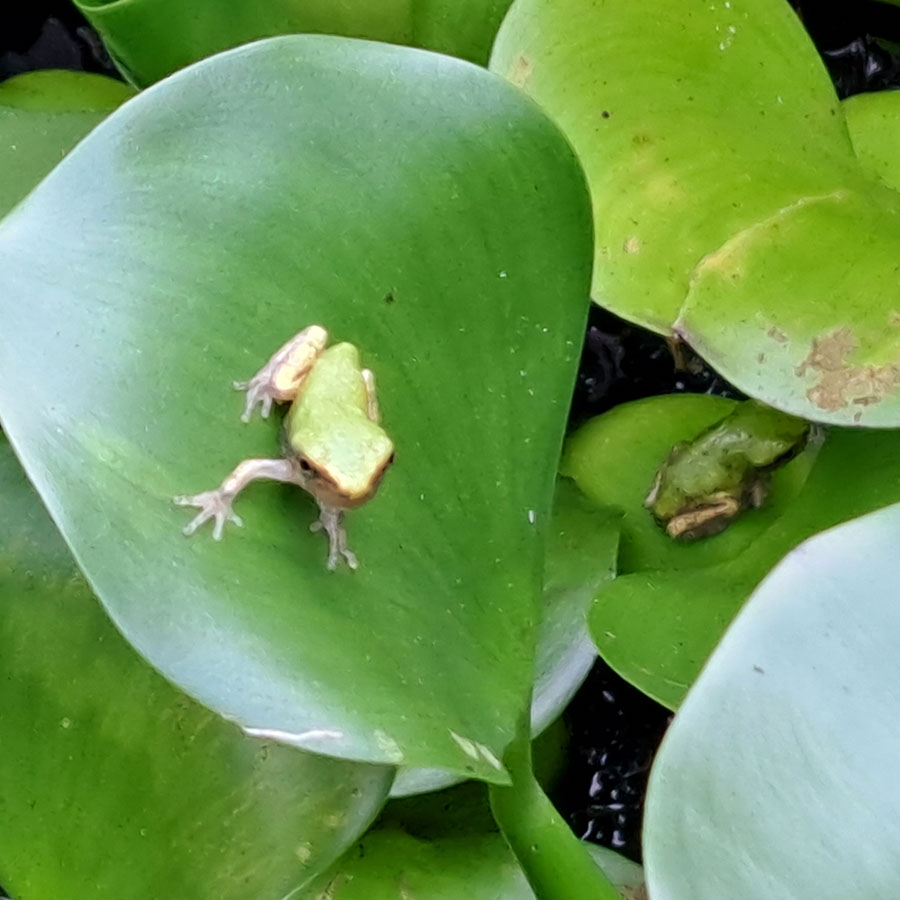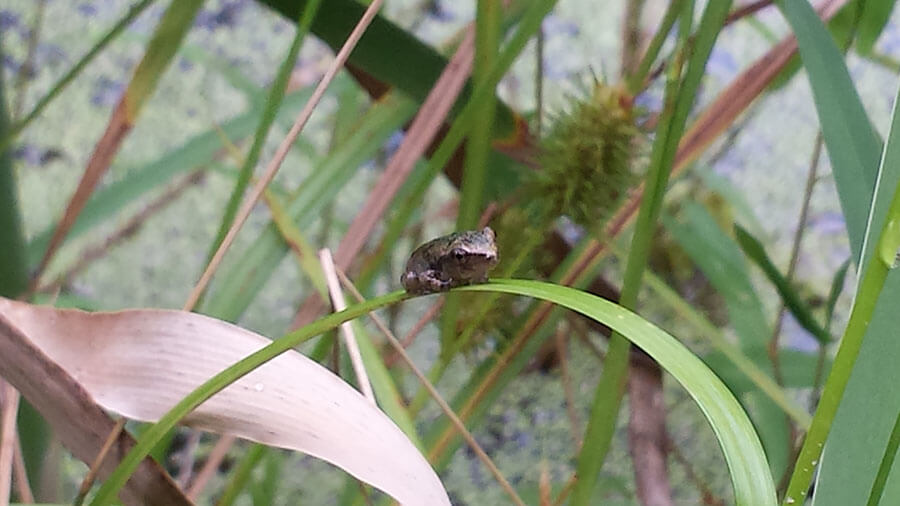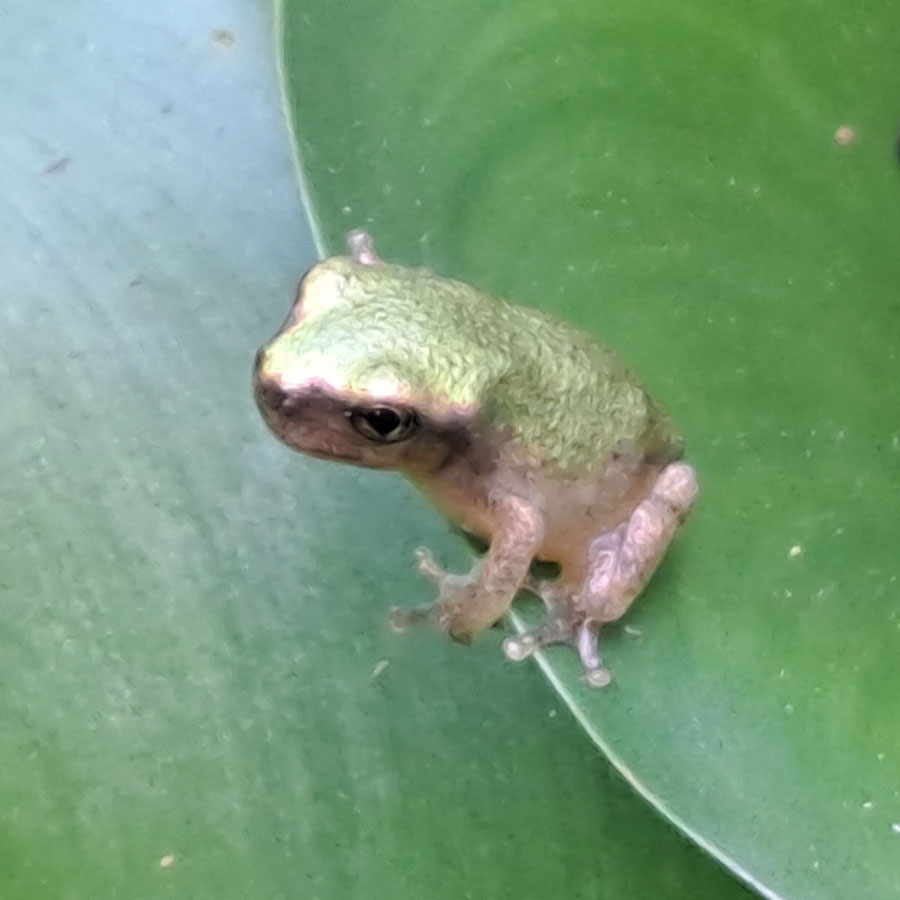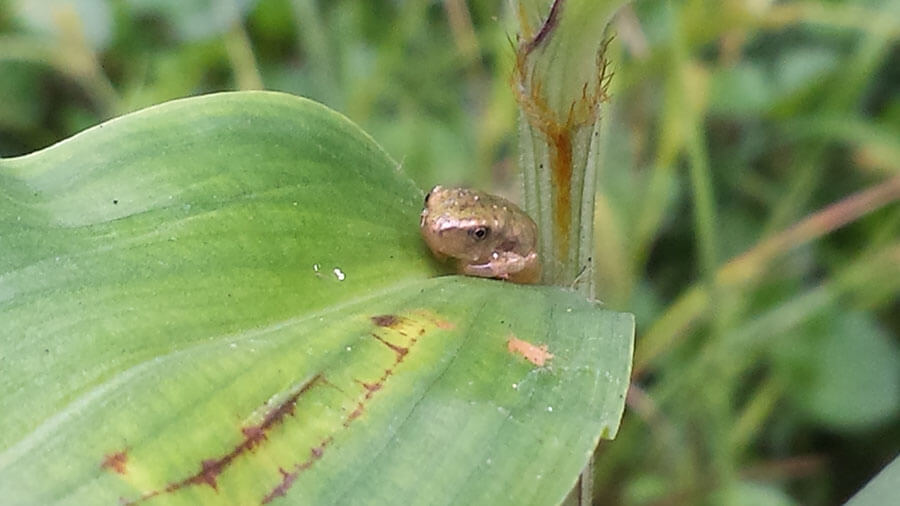The tiny baby tree frog in the video has just swallowed a gnat. Swallowing the gnat made her poop. That is why she is scratching her butt with her hind leg. She is actually kicking away the feces. When she “yawns,” she is actually burping.
Category: Tiny Baby Tree Frogs
Tiny
This tiny frog is too small to eat a mosquito. Gnats and aphids and ants and baby spiders are probably what she can get into her mouth at this point. She has to watch out for everything that might want to eat her, everything from dragonflies to spiders to birds to frogs.
Baby Tree Frogs 2023
This year was a hard year with no rains coming for 8 weeks during the months of April and May. Virtually the entire peach crop of Georgia was lost due to drought drop, and the rabbits in my yard ate zinnias and other plants they normally left alone. This meant that most tree frogs in… Continue reading Baby Tree Frogs 2023
Tiny Baby Tree Frogs
Tiny Baby Tree Frogs I was noticing fewer and fewer tree frog tadpoles, and I was sure that a single juvenile female bullfrog was eating them and eating too many of them to be sustainable. The tree frogs had been singing and laying eggs for three weeks until the bullfrog showed up after a rainstorm,… Continue reading Tiny Baby Tree Frogs



